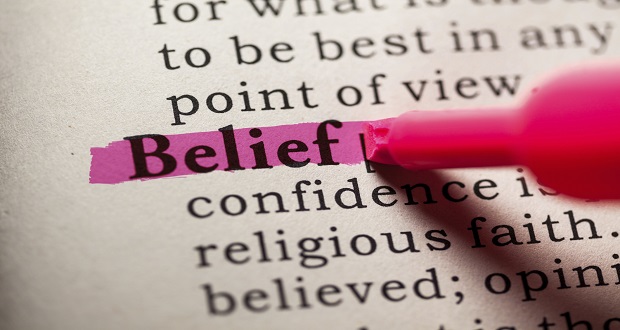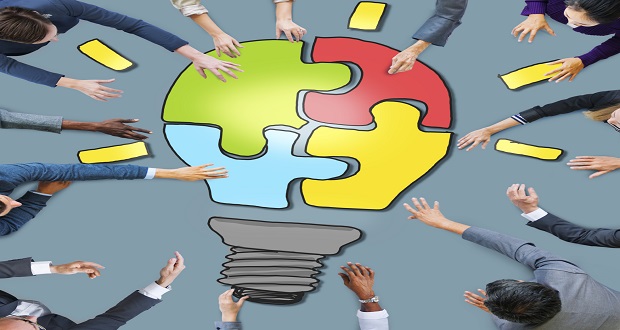
So far in our series Decolonizing Diversity, Equity, and Inclusion Work, we have discussed the problematic nature of doing DEI work in a capitalist society, as well as how that has led people in the sector to rely on the “business case” to make DEI work palatable to those in charge.
Beyond the why of this work, though, practitioners also need to rethink the how.
DEI work almost always starts in the C-Suite, by far the least diverse area of organizations, with women and people of color holding only 28% of those positions. That means the people who have most benefitted from privilege and inequity are the ones tasked with spearheading the effort to break down those very systems.
As my colleague Leigh Morrison pointed out last week, we start in the C-Suite so we can create “buy-in” and commitment from executives. The thinking here is that DEI strategies have no chance of succeeding if corporate leaders aren’t committed to inclusion.
Designing for executives—the vast majority of whom are white, male, or both—reinforces the exact power structure that perpetuates inequity Share on X
The problem with this top-down approach, though, is that designing for executives—the vast majority of whom are white, male, or both—reinforces the exact power structure that perpetuates inequity. Indeed, a top-down DEI plan for an organization makes a critical assumption that should make the conscientious practitioner uncomfortable: that those with decision-making power know what is best for marginalized employees. At best, this top-down approach further decenters the voices of those who should be centered. At worst, it reinforces a patronizing cultural deficit approach that undermines the very crux of the work itself.
A top-down DEI plan for an organization makes a critical assumption that should make the practitioner uncomfortable: that those with decision-making power know what is best for marginalized employees. Share on X
A DEI strategy shouldn’t just meet an organization’s needs, as treating any organization as a monolith is exactly the sterilizing and minimizing of diverse identities that leads to an acute lack of inclusion, and therefore prevents equity. Instead, a D&I strategy should meet the needs of the individual people, especially those with the least amount of power, in an organization. To do this equitably, D&I practitioners can take a page from the design world by utilizing an equity-centered approach to strategy design. Creative Reaction Lab, a nonprofit dedicated to challenging racial and health inequities through equitable design practices, provides a valuable framework in their Equity Centered Community Design (ECCD) field guide.
A co-design process is not just holding a focus group or two at the onset of a project, then following up six months later with a survey. Co-design is about voice and choice, both of which are critical to the success of a DEI strategy. As the Harvard Business Review notes in a meta-analysis of DEI work:
Trainers tell us that people often respond to compulsory courses with anger and resistance—and many participants actually report more animosity toward other groups afterward.
But voluntary training evokes the opposite response (“I chose to show up, so I must be pro-diversity”), leading to better results: increases of 9% to 13% in black men, Hispanic men, and Asian-American men and women in management five years out (with no decline in white or black women).
A DEI strategy, then, that is designed by or with those who will be experiencing it—including women, people of color, and white men—will lead to both more engagement and longer-lasting results (or any results at all).
By utilizing four different components of the ECCD framework when designing and kicking off new client projects, we can give diversity and inclusion strategies a valuable head start on successfully achieving their outcomes.
Challenge Power Dynamics
First, recognize and challenge the power dynamics. Have the leaders of the organization reflect on the following questions:
- “Am I designing with the community being impacted by the project, or for the community?
- What power and/or privilege do I hold over the community being impacted by the project?
- Who has decision-making power in the project? Why? Do the people making decisions reflect the people in the community who are impacted by the design?” (ECCD)
These reflection questions serve two purposes: it reframes leaders’ thinking about the project and who it is for; and it surfaces the less-powerful, or powerless, stakeholders whose engagement is critical to the project’s success.
Find the Real Problem By Engaging the Community
Second, engage community members in surfacing the real problem to address. Executives, HR representatives, and Chief Diversity Officers may have their own ideas about what the issue is, but no one knows better what the true pain points are than the employees themselves. As Creative Reaction labs notes, “The better we can understand a community, the better we can narrow down needs and the causes of why they are not fulfilling those needs. We can then use this step to begin designing a way to improve futures.”
When engaging with the community, it is helpful to keep these tips from the ECCD in mind:
- Connect with the community through conversation, observation, empathy, and humility.
- Create space for community members to have consistent input in the project. Often times, community members are asked to provide input at the beginning of a project and are excluded in subsequent steps. It’s crucial that community members are seen and treated as leaders and decision-makers throughout the process.
- Gather insights, perspectives, and expertise from groups whose voices are often dismissed or excluded.
The fundamental concept here is to design with a community—in this case, the organization’s staff—to first fully understand the problem, then to create a long-lasting solution for it. Put another way, a DEI strategy that solves the wrong problem or, worse yet, exists solely to “check the box” will only further degrade inclusion and equity in an organization and send a clear message that the issue is unimportant to leadership.
A DEI strategy that solves the wrong problem or, worse yet, exists solely to “check the box” will only further degrade inclusion and equity in an organization and send a clear message that the issue is unimportant to leadership. Share on X
Ideate and Prototype
The next step is to brainstorm possible approaches to the solution. Will there be in–person seminars? Self-guided online learning? Randomly assigned cohorts? Reading circles?
During this step, community members engage in a co-design session (a charrette) wherein they first come up with as many possible solutions as they can; then, in groups, create a rough prototype for their chosen solution (in this case the prototype may be a representation of what the implemented strategy would look like, perhaps as a timeline, a storyboard, or a syllabus).
The charrette isn’t meant to produce a baked-in final solution, but rather to give the designers an abundance of ideas, insights, and information about the community. The designers then take all of this rich material and turn it into an informed, usable solution.
(It’s important to note here that this type of co-design process isn’t a free-for-all—it’s not a matter of simply doing anything the community says, abdicating your professional knowledge and expertise. Instead, during the design process the DEI practitioner serves as the facilitator and designer, offering specific tactics, strategies, and suggestions that they know to be successful. The key is for the designers and the executives to let go of the idea that they’re the only experts in the room—because again, no one knows better what problem needs to be solved than those experiencing them every day.)
Test and Learn
Finally, after building, the designers need test and learn.
In the case of D&I strategies, this can be as simple as vetting the proposed solution with different community members who would be experiencing it or having them pilot test an online learning series.
The goal is to ensure that the idea is usable, addresses the identified problem, and is accessible.
Remembering that it’s critical to allow community members to have consistent input into the project through clear consistent channels for sharing feedback, the testing and learning step then becomes an ongoing process. Iteration is key. If it isn’t already where it needs to be, iterate and retest to get it there. If it’s already on point, iterate and retest to make it even better.
Yes, this method is time and labor intensive. It requires hours of preparation and facilitation, as well as an abundance of clear, timely communication. The reward, though, is a decolonized mission that solves a real, important problem, works for the organization, increases staff engagement, and creates long-lasting change. And if we are to truly decolonize diversity, equity, and inclusion work, then taking the time to consciously and strategically give power to those who otherwise don’t have it, is a professional imperative.
If we are to truly decolonize diversity, equity, and inclusion work, then taking the time to consciously and strategically give power to those who otherwise don’t have it, is a professional imperative. Share on X



















